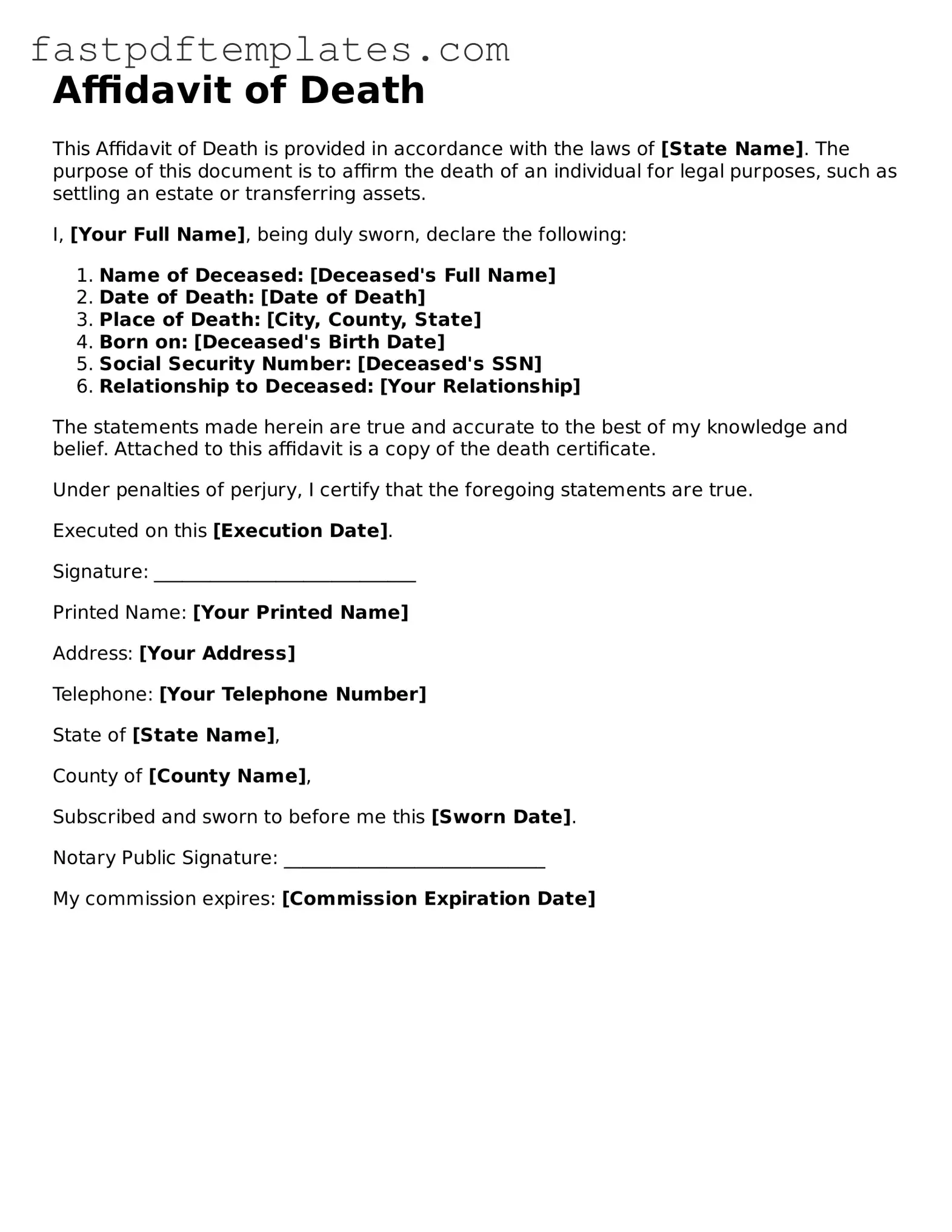Affidavit of Death
This Affidavit of Death is provided in accordance with the laws of [State Name]. The purpose of this document is to affirm the death of an individual for legal purposes, such as settling an estate or transferring assets.
I, [Your Full Name], being duly sworn, declare the following:
- Name of Deceased: [Deceased's Full Name]
- Date of Death: [Date of Death]
- Place of Death: [City, County, State]
- Born on: [Deceased's Birth Date]
- Social Security Number: [Deceased's SSN]
- Relationship to Deceased: [Your Relationship]
The statements made herein are true and accurate to the best of my knowledge and belief. Attached to this affidavit is a copy of the death certificate.
Under penalties of perjury, I certify that the foregoing statements are true.
Executed on this [Execution Date].
Signature: ____________________________
Printed Name: [Your Printed Name]
Address: [Your Address]
Telephone: [Your Telephone Number]
State of [State Name],
County of [County Name],
Subscribed and sworn to before me this [Sworn Date].
Notary Public Signature: ____________________________
My commission expires: [Commission Expiration Date]
